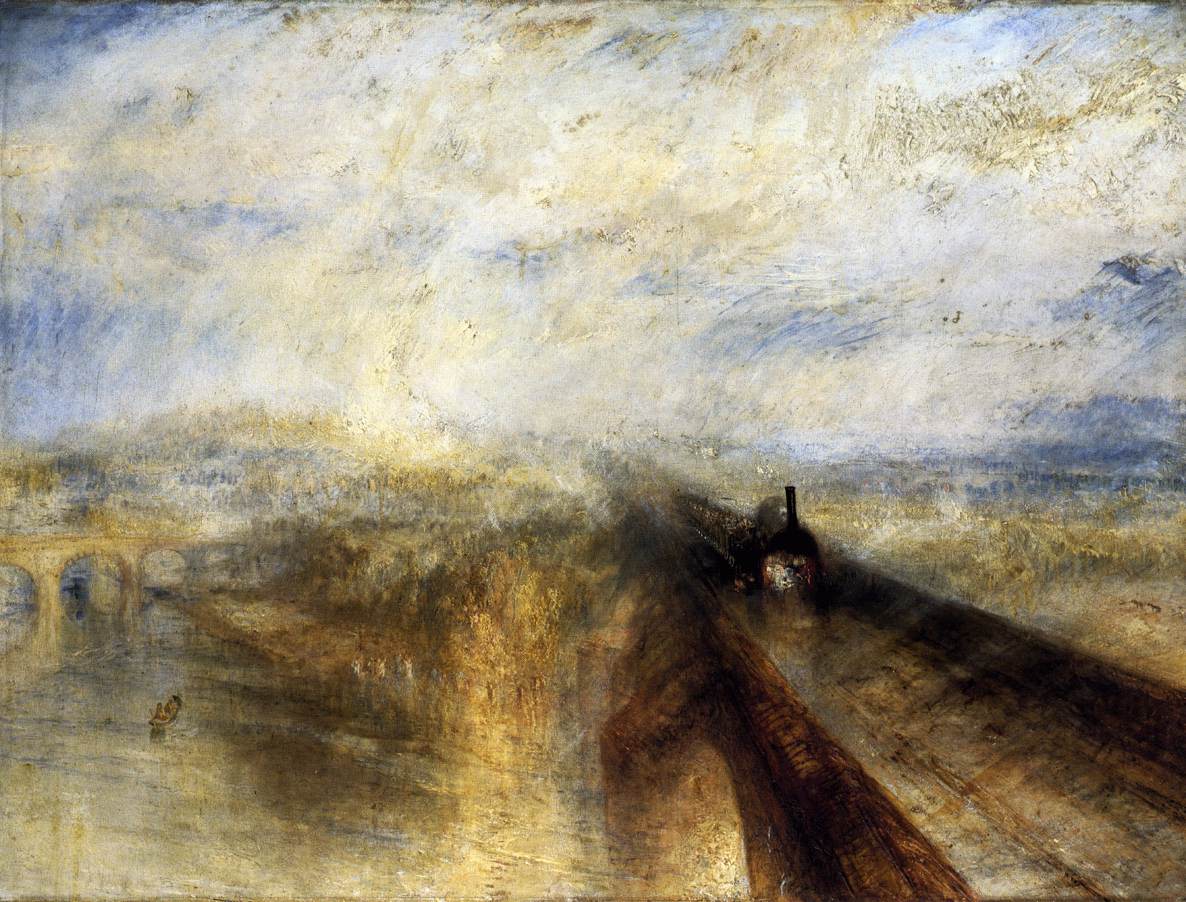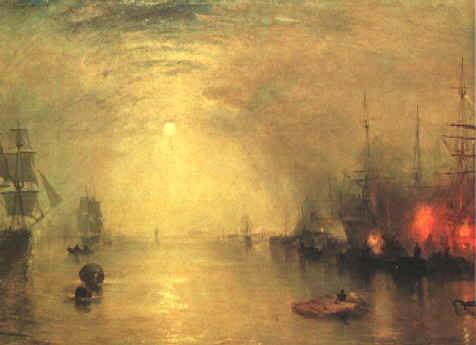
Railways as agents of industrial change
"The engine was being presented as the most telling 'sign' of modern life." '1'
Joseph Mallord William Turner: Rain, Steam and Speed –The Great Western Railway (1844)
oil on canvas, The National Gallery of Art, London, U.K.
"Exhibited in 1844, the work depicts the Maidenhead railway bridge over the Thames constructed between 1837 and 1839. According to the gallery, "the view is to the east toward London."
The depiction of the new railway by J. M. W. Turner, who lived from 1775 until1851 has been described as "nearly a transition to impressionism."
That interpretation is because we see as this train literally emerging from a nearly indistinguishable background of colors as it has crossed the bridge over the Thames pulled by the speeding locomotive. One may also see this depiction as meaning the figurative crossing of a threshold in history as symbolized by the coming of the machine over and into the quiet world to both industrialize the landscape and transform the conditions of human life, labor, and transportation.
From out of natural clouds comes the new clouds from this steam spewing engine moving directly at the viewer and splitting the canvas in two by the dark trackbed carried by the dark bridge across the light river. It is almost as if the natural barriers are traversed, bridged if you will, although not fully transcended.
Sublimely the locomotive carries with it a power to mystify distances while bridging the dimensions of space and time. The disturbance is suggested by a rabbit painted scurrying away in the foreground almost camouflaged by the tracks.
October 15, 2012
Arnold Pacey, Technology in World Civilization, "The engine was being presented as the most telling 'sign' of modern life." p. 167.
 Compare to Keelmen,
Compare to Keelmen,  from 1835.
from 1835.
Rain, Steam and Speed –The Great Western Railway, (1844), National Gallery of Art, London, U.K. & Keelmen heaving coals by moonlight, (1835), National Gallery of Art, Washington D.C. Widener collection.
Joseph Mallord William Turner 1775-1851 is classified by the Tate Galleries; as 1770-9, 18th century, Sublime, Picturesque, Romanticism although he spans the post-romantic period.
Joseph Mallord William Turner 1775-1851; concerning this 1835 earlier work "Critical opinion about Turner’s unusual nocturne was divided. One reviewer observed: “It represents neither night nor day, and yet the general effect is very agreeable and surprising.’
Commissioned as a pendant to Venice: The Dogana and San Giorgio Maggiore and shown at the Royal Academy in 1835, this canvas creates a total counterpoint in mood and meaning."
Kahn Academy, Smarthistory (a dialogue) about Rain, Steam and Speed
"Speakers: Dr. Beth Harris, Dr. Steven Zucker discuss Rain, Steam, and Speed -- The Great Western Railway was exhibited at the Royal Academy in 1844
Dr. Beth Harris: "The rest of the train dissolves. . . ."
Pursell | Pacey–World | Postman | Tenner |Pacey–meaning| Eberhart | Snow | Kaku | Boulding | Delillo | Kranzberg